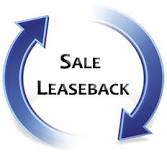


Over the course of my career I have been involved in many transactions in the sale/leaseback arena of the commercial real estate investment world, and I have completed numerous transactions ranging from small single-tenant deals to very large industrial properties. There has been much written on the benefits of a sale/leaseback to the seller in a commercial real estate transaction. In this post I would like to explore the sale/leaseback investment from the point of view of the investor.
First, let’s define what is meant with the term “sale/leaseback.” A sale/leaseback is a financial transaction where an owner sells its property and then immediately leases it back from the buyer as part of the same transaction. The seller gets the profits from the sale while keeping possession and use of the property, while the buyer is assured immediate long-term income on the property.
To understand this from a commercial real estate investor’s point of view, we must first examine the reasons why a seller would consider such an option. The benefits for the seller of the property would include:
Of these, raising cash for the growth of the business is the most typical reason I have seen for sale/leaseback. Most companies make a much better rate of return in their business than they do in their business real estate. It is also easier and less expensive to raise cash for growth and operations by selling their property than it is to bring in investor capital, partners or bank financing. The following link contains a placemat that we use when working with sellers on sale/leasebacks, including a sampling of some recent commercial real estate transactions that we have completed:
Sale-Leaseback Placemat (click for samples of properties sold)
With that context in mind, let’s look at this more closely from the perspective of the commercial real estate investor. Why would an investor look for a sale/leaseback strategy as opposed to a more standard real estate investment model?
With those benefits in mind we must also consider the risks associated with this type of commercial real estate investment. Investment risks include loss in value of the real estate in a bad market and inflation on a lease with no rent escalations. The largest risk is the overall success or failure of the seller/tenant. A commercial real estate investor must have the ability to review and understand financial statements or hire that expertise in a transaction of this type to make sure that the company’s overall health is good. It is also important to look at what this new rent payment will do to their financial picture. There are a few things that I look for when evaluating a sale/leaseback transaction such as:
You must make sure that the company has good intentions and is not planning to take its cash with no intention to continue operations and make lease payments. I have had clients evaluate a company interested in a sale/leaseback only to determine that they are not strong enough to support the negotiated lease. In some cases, they have been able to overcome that discovery by obtaining “credit enhancements” from the sellers. These are usually in the form of personal or other financial guarantees of payment. However, on some occasions, we have been able to negotiate provisions whereby the seller provides a security deposit equal to 6 months to 18 months of rent that is released to the commercial real estate buyer in the case of a default on the lease.
The types of commercial real estate investors buying sale/leaseback properties range from large institutional buyers focused exclusively on this property type to small local investors with only one or two real estate properties in their portfolio. I hope this exercise proves helpful as you consider this type of commercial real estate investment for your portfolio.